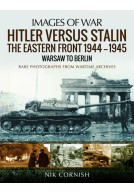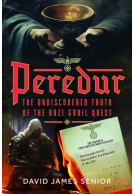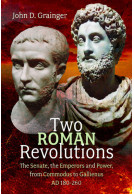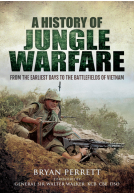Northern Ireland: The Troubles (ePub)
From The Provos to The Det, 1968–1998
Imprint: Pen & Sword Military
Series: History of Terror
File Size: 14.4 MB (.epub)
Pages: 128
Illustrations: 60
ISBN: 9781526729187
Published: 2nd May 2018
| Other formats available | Price |
|---|---|
| Northern Ireland: The Troubles Paperback Add to Basket | £12.99 |
It is, of course, no secret that undercover Special Forces and intelligence agencies operated in Northern Ireland and the Republic throughout the ‘troubles’, from 1969 to 2001 and beyond. What is less well known is how these units were recruited, how they operated, what their mandate was and what they actually did. This is the first account to reveal much of this hitherto unpublished information, providing a truly unique record of surveillance, reconnaissance, intelligence gathering, collusion and undercover combat.
An astonishing number of agencies were active to combat the IRA murder squads (‘the Provos’), among others the Military Reaction Force (MRF) and the Special Reconnaissance Unit, also known as the 14 Field Security and Intelligence Company (‘The Det’), as well as MI5, Special Branch, the RUC, the UDR and the Force Research Unit (FRU), later the Joint Support Group (JSG)). It deals with still contentious and challenging issues as shoot-to-kill, murder squads, the Disappeared, and collusion with loyalists. It examines the findings of the Stevens, Cassel and De Silva reports and looks at operations Loughgall, Andersonstown, Gibraltar and others.
Care is made, by the author, to not take a side for the most part, any of the various paramilitary “murder squads” are all painted as ruthless and somewhat evil in their doings. I appreciated this, as most books on terrorism, and counter-insurgency that I’ve read are very one-sided and downplay the reasons behind the behavior. I wasn’t expecting a pro-Britain book or anything, but the honesty was refreshing.
NetGalley, Stephen Kelley
I enjoyed this book a lot, It’s very dense with information and covers a lot of ground.
Rating: 5 out of 5 stars
NetGalley, Zoe Hitchen
An absorbing and informative read!
This book is well researched and well written. I was a youngster at the beginning of the troubles so looked forward to learning more about the topic. The book details the troubles from their beginning to the ceasefire, expertly describing both sides of the conflicts. The collusion of the uk government was a revelation to me although not completely incredulous.
For thirty years 'The Troubles' in Northern Ireland was a regular part of our daily news reports and media coverage, whilst one or two groups frequently made the headlines there was a number of other agencies and players involved in this 'dirty war' and this book doesn't just look at the main players it looks at who else was there, how they came to be and what their role was.
NetGalley, Big Bertha
There are many books about this period of history and I found this one interesting because it identifies in three sections; Nationalist paramilitaries, Loyalist paramilitaries and the third covering the various military, police and intelligence agencies, focusing not only on the main units and organisations but also the lesser known ones, telling what they did and what connections they had with each other. The closing chapters deal with the inquiries that followed and how they themselves were hampered by lies and deceit, with many documents being deliberately misplaced or destroyed in an attempt to cover-up actions and events that took place.
A well written and thought provoking account not just for those that were there but also for anyone who has an interest in this not so distant part of our history.
Rating: 5 out of 5 stars
NetGalley, Donna Maguire
I knew that this was a book that I wanted to read as soon as I read the blurb for the book and I was not disappointed – it was full of interesting facts and detail and I had it read in a day.
I liked the layout of the book and as I was reading it, I was encouraged to look on the internet and find out more on a few of the news stories and it was great to see the photos that were added to bring the period to life. I liked the author explaining too the focus of the troubles and that it is not just a simple case of Protestants v Catholics too as many are still led to believe.
I think that photos are really needed in a book like this to demonstrate the human impact more that just words can do – after all they are right in that a picture is worth a thousand words even if some of these images used are upsetting, they are right to be added.
The Troubles were already going on when I was born so I didn’t know that much about the back story, only what I had previously read so it was great to be able to read a book that focussed on the origins through to the signing of the Good Friday Agreement (which actually being signed on my 16th birthday) and the issues that took place after this until a ceasefire a halt was finally called by the main protagonists.
It is 5 stars from me for this one, I found it to be an additive read even of the subject matter at times was tough and the impact of some of the actions on the innocent families involved is truly harrowing.
Rating: 5 out of 5 stars
NetGalley, Anna Maria Tothivan
This book is part of the History of Terror Series. Mr. Lesley-Dixon has written a well-researched book on the history of The Troubles. He starts out at the beginning - with how things came to be. He tells of the common assumption that The Troubles were simply a religious conflict between the majority Protestant loyalists and the minority Catholic nationalist. He clearly presents both sides. He details everyone that was involved in the conflict. The book has facts and figures for anyone doing research on this time period. There are also many photographs in the book to illustrate what he has written.
Mr. Lesley-Dixon writes about Bloody Sunday in 1972 right up to and including the Good Friday Agreement in April 1998. I would recommend this book for anyone that is looking to learn about The Troubles. This book is very informative and presents the facts in easy to understand writing.
A highly informative account.
Perspectives on Terrorism
As featured by
Wheaton Business Journal, September 11th 2018
During the Northern Ireland civil war from 1968 to 1998, known as “The Troubles,” a spectrum of adversarial Roman Catholic “Republican” and Protestant “Loyalist” terrorist groups, and the responding British government’s military, police and intelligence undercover units, operated in the province.
The Washington Post 11/9/18
An extensive literature has been published about the Republican and Protestant terrorist groups (referred to by their supports as “paramilitaries”), and the political contours of the “The Troubles” are also well known, especially how the civil war was resolved through a successful British government-led peace process that culminated in the signing of the Good Friday Agreement on April 10, 1998, and the resulting power-sharing reforms between the province’s previously warring factions, which have stood the test of time through the current period.
What is less well known, and is one of this book’s major contributions to understanding the full nature of the warring groups responsible for the province’s protracted conflict, is how the British government’s responding military, police and intelligence special units were formed, their mandates, how their operatives were recruited, how they operated and their significant operations.
Drawing on recently released archival material, Kenneth Lesley-Dixon’s “Northern Ireland, The Troubles: From the Provos to the Det, 1968-1998,” reveals new information on what was often a “dirty war” between the Republican and Loyalist terrorist groups, as well as by the British counter-terrorism services that were inserted to bring order into the province’s Hobbesian state of nature, until the British political echelons had finally succeeded in formulating a peaceful solution to the protracted conflict.
To examine these issues, Mr. Lesley-Dixon’s book — with numerous photographs that illustrate the text — is divided into three parts. The first part, “Nationalist Paramilitary Organizations,” focuses primarily on the Provisional Irish Republican Army (PIRA). It operated from 1970 to 1998 with Sinn Fein, its non-violent political front contesting the U.K.’s parliamentary elections. The PIRA, the author explains, committed the largest number of terrorist attacks, which aimed “to foster urban insurgency, civil disorder [to] seriously exercise and strain routine policing and thus create a threat to national security and advance their desire for a one-Ireland island.”
It also aimed to disrupt the province’s civil order by bombing local businesses “to deter inward investment and job creation in the province. Some of its major terrorist operations involved a bombing assassination of Lord Louis Mountbatten on Aug. 27, 1979 while he was on vacation in Mullaghmore, County Sligo, and bombing the Grand Hotel in Brighton on Oct. 12, 1984, where politicians including Prime Minister Margaret Thatcher were staying for the Conservative Party’s annual conference. While Thatcher was not hurt, five people were killed, and 34 others were wounded.
“Loyalist Paramilitary Organizations,” the second part, examines the origins and operations of groups such as the Ulster Volunteer Force (UVF) and the Ulster Defence Association (UDA). Their operations were “intent on championing Unionism, protecting Protestant communities and ruthlessly retaliating against Republican violence.”
What distinguished them from their Republican paramilitary counterparts, however, was their collusion with the British security services. The author cites a 1985 MI5 assessment that “85 percent of the UDA’s ‘targeting material’ came from the security forces” and that a senior Royal Ulster Constabulary officer was suspected of “assisting loyalist paramilitaries to procure arms.”
In the book’s final part, “British Security Forces,” the discussion begins with the inability in 1969 by the RUC, the Province’s police force, to effectively deal with “The Troubles” violent outbreaks, which led to the deployment of the British Army to support the civil administration. Its policing problems persisted, with a 1992 estimate that only 7.7 percent of the RUC’s full-time force was Catholic, leading to criticism by Irish nationalists of engaging in discriminatory policing against the Province’s Catholic population and “collusion with loyalist paramilitaries and British intelligence units.”
As a continuous “dirty war,” the British security forces had to deal with contentious and challenging rules of engagement issues, with one of the most controversial the shoot-to-kill policy when faced with threatening insurgents. This was the case in March 1988 when British intelligence uncovered information of a PIRA plot to attack a parade of British military bands in Gibraltar.
When confronted by this terrorist cell, the responding Special Air Service (SAS) team killed its three members. This became highly controversial, as the author writes that “Despite initial praise for averting mass murder, controversy was not far behind when it was realized that none of the three IRA members had been armed and no remote bomb trigger was to be found.”
The operations of other British security forces covered in dramatic detail include the Military Reaction Force (MRF), the Special Reconnaissance Unit (also known as the 14 Field Security and Intelligence Company — “The Det”), as well as MI5, Special Branch, and the Joint Support Group (JSG).
This highly informative account would have benefited from an additional concluding chapter that updated the status of these terrorist and government security forces in the aftermath of the peace process, especially the demobilization of the Republican and Loyalist forces and the integration of their personnel into civilian society.
Listed in the 'First Flush' feature
Books Ireland, September/October 2018
Featured 'ON THE SHELF' by Neil Smith
Wargames Illustrated, May 2018



















